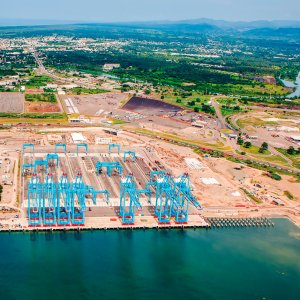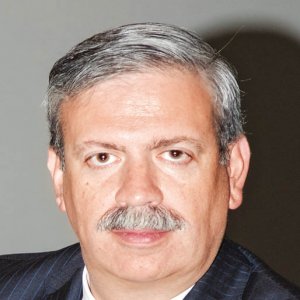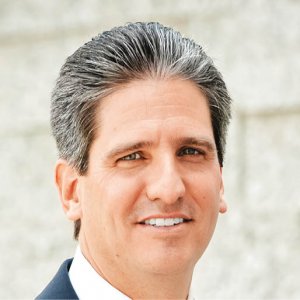Digital Infrastructure for a New Era

STORY INLINE POST
Q: How is Microsoft’s digital infrastructure helping PEMEX become a more productive enterprise?
A: We have created a collaboration platform for PEMEX and CFE. In the past there was no efficiency or economies of scale but now the trend is segmentation and we see different users rising up in both organizations. There are users working on oil platforms at sea, users in corporate offices and others in the field, all with different needs. We have adapted to their unique requirements and this allows users across different segments to collaborate, ultimately improving their communication process. We are connecting the threads and making the energy company more intertwined within its business divisions to help it reach its objectives. We want to guide PEMEX to a new era where the key terms are operational efficiency and cost reduction. We can adapt our solutions to all areas of the industry, from exploration and production to transportation and commercialization.
Q: How can Microsoft ease PEMEX’s concerns regarding the transfer of knowledge to its entire workforce?
A: The global oil and gas industry is suffering a loss of experienced human capital spurred by retirement and PEMEX is not exempt. We are transferring knowledge to the cloud and this means any user can gain access, analyze the data and see what is happening in real time. From extraction to point of sale, there are different processes that require operational efficiency and through our solutions we can help companies become cost-efficient and agile.
In this digital world, oil companies wonder how a refining plant can be kept in optimal condition, how predictive maintenance can be carried out without impacting production and how resources can be efficiently extracted. All these questions are answered with the solutions we provide. We are the creators of a communication platform that PEMEX and CFE are exploiting as they transition into productive enterprises of the state.
Q: How can digital infrastructure help companies deal with economic pressures?
A: The industry is becoming more complex and the volume of data generated continues to rise. This stems from different sources, from financial and transportation to production and storage. Having all this information available, analyzed and presented in a tangible manner will help companies overcome economic pressures by improving their decision-making processes. If the information is not shared across the whole platform, efficient planning and production would be impossible to achieve. The drop in oil prices means it is crucial that companies invest in information assets since this will allow them to operate in an optimal manner according to market conditions.
Q: How can Microsoft develop and improve reservoir models and help players enhance their oil recovery techniques?
A: The industry has a series of needs that must be addressed and areas of opportunity to be tackled. Companies must maximize oil production without the risks and costs that come with developing new oil fields and they need improved analytics that will enable them to predict production and maximize recovery. Unfortunately, some players do not have access to realtime drilling and production data to improve their models in a timely fashion. Through our solutions we can help oil companies monitor equipment and processes in real time, help them evolve and change their models based on updated production information and enhance their recovery methods. Microsoft can help eliminate bad habits like making recovery decisions based on outdated information, prevent long cycles for coordinating supply chains as production changes and ultimately eliminate the early closure of wells.
Q: What solutions does Microsoft have for companies facing issues of safety and security for their physical and digital assets?
A: A pressing concern is the security of assets and we have many solutions to narrow the safety gap a company like PEMEX may experience. Some oil platforms have experienced fires and explosions while theft of resources can be commonplace. It is important to tackle these issues by having tight control of the supply chain, which is achieved by increasing the visibility and availability of information. Another important development is that new competitors will stand against PEMEX and this means Mexico needs to foster trained human capital and ensure the availability of information.
The non-oil companies must grow and become more competitive in this open market and as such it must train its workforce. Microsoft is following the course of the reformed Mexican energy landscape by creating new divisions. The first tackles the oil, gas and energy sectors, the second caters to the regulatory bodies that work within these industries, and thirdly we have a new business division that looks at market entrants.
Q: What are the implications of data centers being located underwater?
A: Early in 2016, Microsoft Research unveiled an ambitious experiment to plant a data center in sea water. This vessel weighs 17,236kg and contains enough room to hold approximately 300 PCs. One would think that electrical components and water would not mesh but placing data centers underwater can help keep the contents cool and it has logistical benefits. Half the world’s population lives within 200km of the ocean and subsea systems may be easier to deploy if extra capacity is required. These can be placed close to oil platforms. An interesting location would be Galveston, Texas because there are many platforms there and the information could be immediately transferred to oil companies onshore.
Q: How can companies like PEMEX implement remote pump monitoring and oil field optimization solutions?
A: A flagship project that Microsoft highlights is that with Rockwell Automation. This noted leader in the sector needed a solution to streamline all of its production decision processes ranging from where to drill, extraction strategies, when to change production methods and control of the movement of equipment and personnel. The solution we provided entailed Rockwell’s SCADA system reporting back to a central system using IPbased communications and the cloud. This allowed the automation of all workflows and improved decisionmaking processes. Players in the industry stand to benefit from this since our solution significantly improved uptime and efficiency, enabled real-time equipment diagnostics and prognostics and provided a multi-well performance optimization.























